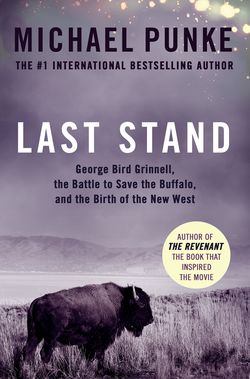Читать книгу Last Stand: George Bird Grinnell, the Battle to Save the Buffalo, and the Birth of the New West - Michael Punke, Michael Punke - Страница 9
PROLOGUE THE STAND
ОглавлениеAfter placing about fifteen shots where they were most needed, I had the herd stopped, and the buffalo paid no attention to the subsequent shooting.
—VICTOR GRANT SMITH
Vic Smith, a hunter, lifted his head above a rise on the plains floor, peering down at several hundred buffalo in the valley of the Redwater River. The Montana winter of 1881 was frigid, all the more so because Smith lay prone in the snow, two Sharps buffalo rifles and several bandoleers of cartridges spread out on a tarp beside him. Smith was careful to stay downwind and wore a white sheet to conceal him from the nearest animals, three hundred yards away. For a while he just watched, his experienced eyes studying the herd—picking out the leaders, anticipating movements, carefully planning his first shot. It all looked perfect, the ideal stand.
Finally Smith reached for one of the Sharps, working the lever to chamber a four-inch brass shell. Supporting the stout barrel across his arm, Smith sighted carefully on the old cow that he knew led the herd. He aimed at a spot just in front of her hip, then fired.
The report of the big gun thundered across the wide plain, and a cloud of acrid smoke temporarily obscured the herd. Smith did not look to see if he had hit his target—he knew he had. Instead he set the smoking rifle on the tarp and loaded the second gun, then pulled it snug to his shoulder. He alternated rifles each shot; otherwise the barrels became so hot that they fouled. In Texas, he’d heard, buffalo hunters sometimes urinated on their guns to cool them, but in Montana, winter did the work.
The second Sharps ready, Smith looked up to find exactly what he expected. His first shot had found its precise target in front of the cow’s hip. When hit in that spot, Smith knew, the animal could not run off but instead would just stand there, “all humped up with pain.” As Smith intended, other members of the herd—the old cow’s “children, grandchildren, cousins, and aunts”—were already starting to mill about, confused, some sniffing at the blood that seeped from the cow.
Smith now sighted on another old cow on the opposite side of the herd, marking the same target in front of the hip. He fired again.
Smith worked deliberately, never rushing, a shot about once every thirty seconds. Every bullet was strategic. Most of the early targets were cows, though occasionally he picked off a skittish bull that looked ready to bolt. “After placing about fifteen shots where they were most needed,” he would later recall, “I had the herd stopped, and the buffalo paid no attention to the subsequent shooting.” Experienced hunters like Smith called it “tranquilizing” or “mesmerizing” the herd.
An hour later he was done. Below Vic Smith in the valley of the Redwater lay 107 dead buffalo. In the 1881 season he would kill 4,500.1
THE STORY OF HOW THE BUFFALO WAS SAVED FROM EXTINCTION IS one of the great dramas of the Old West. More profoundly, it is a story of the transition from the Old West to the New—a transition whose battles are still fought bitterly to this day. The story is personified in a man, little known today, by the name of George Bird Grinnell. Grinnell was a scientist and a journalist, a hunter and a conservationist. In his remarkable life, Grinnell would live the adventures of the Old West even as he helped to shape the New.
